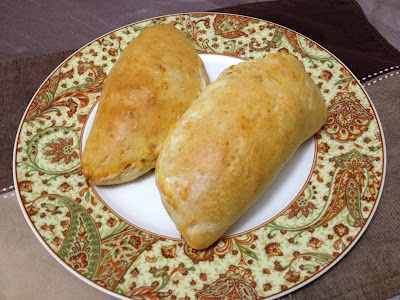It's been a long time since I made this curry in Delhi style. We used to relish it so much when we lived there. Luckily I happened to stumble upon it recently in one of those little trips into my past and therefore managed to bring this inanimate thing back to life. I had to make it the very next day otherwise it would have been a long lost forgotten thing again.
What makes it so unique in "Delhi style" is just one different spice and one finishing touch which changes its entire chemistry. It is the magic of the fried onions and the hint of the smoky flavour from the black cardamom that gives it the distinct flavour and taste which is so different from the traditional curries.
Here's the recipe!
Ingredients:
2 Lamb shanks
2 medium onions
4 green chillies
1-2 Black cardamoms
1 Bay leaf
4 Cloves
2 tsp ginger garlic paste
2 tbs yoghurt
2 tbs vegetable oil
1 tsp kashmiri red chilli powder
1 tsp coriander powder
1/2 tsp turmeric powder
Salt to taste.
Method: 1. Cut each one of the lamb shanks into 2 pieces. This makes it easier to eat the bone marrow which is very delicious rather than keeping them whole. Then clean them by trimming away the fat and removing the skin carefully without chopping off the tender meat. Rinse well, drain and keep aside.
2. Slice the two onions. Heat 1 tbs oil in a pressure cooker, add the black cardamom, cloves and the bay leaf and fry half the onion slices to a light golden brown. Reserve the other half.
4. Add ginger garlic paste, turmeric, kashmiri chilli powder and coriander powder, give it a stir then add the lamb shanks and salt. Sauté well with the spices.
5. Add the whisked yoghurt to the pot followed by green chillies, cilantro and 1-2 cups of water. The water should be 2 inches above the shanks. After the first whistle in the pressure cooker turn down the heat, close the lid air tight and pressure cook for 10 - 15 minutes. (But if you are not using a pressure cooker you will have to cook on low to medium heat for at least 45minutes to an hour. They should be so tender as to come off the bone. You can also cook in the instant pot following the directions for cooking meat accordingly.)
6. Meanwhile fry the reserved onion in the remaining 1tbs of vegetable oil till nicely browned but not burnt. So extra care should be taken while frying the onions to have them rightly done. Set aside.
7. Once the shanks are done turn down the heat to low and add these fried onions to the pressure cooker, cover lightly not air tight and let it simmer slowly for some more time (5-10 mins). The browned onions not only give colour to the curry but also a sweet nutty flavour which when combined with the smoky flavour from the black cardamom and other spices further enhances the taste and makes the curry insanely delicious!
8. Do not let the curry thicken too much. If it tends to thicken then sprinkle a little water on all sides and let it simmer till the oil comes on top until you don't see those fried onions anymore. Add chopped fresh cilantro to garnish and enjoy with rotis (flat bread), naan or rice.
Notes:
Kashmiri Chilli powder - Kashmiri chilli is a mild form of chilli which gives colour and flavour to the dish and not much heat. You can get the MDH brand of Kashmiri chilli powder from any indian grocery store. I haven't found any other brands here. Or the other best alternative would be to soak the kashmiri chillies in water and grind them into a paste. Though this is a lengthy process, it is fresh and more flavourful.
Black Cardamoms - Another variety of cardamoms. They are big and black and have a smoky flavour. All asian grocery stores carry it.





































